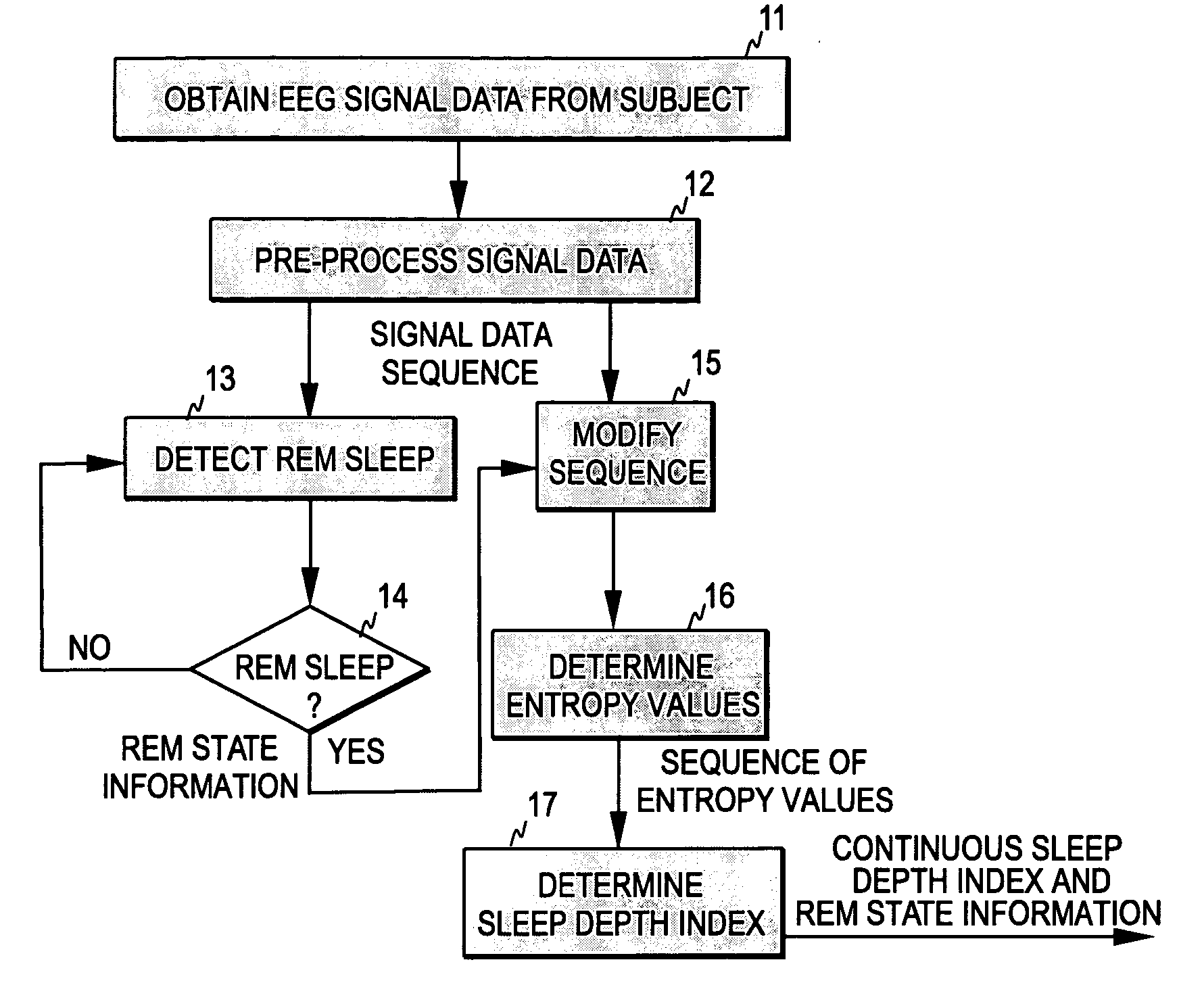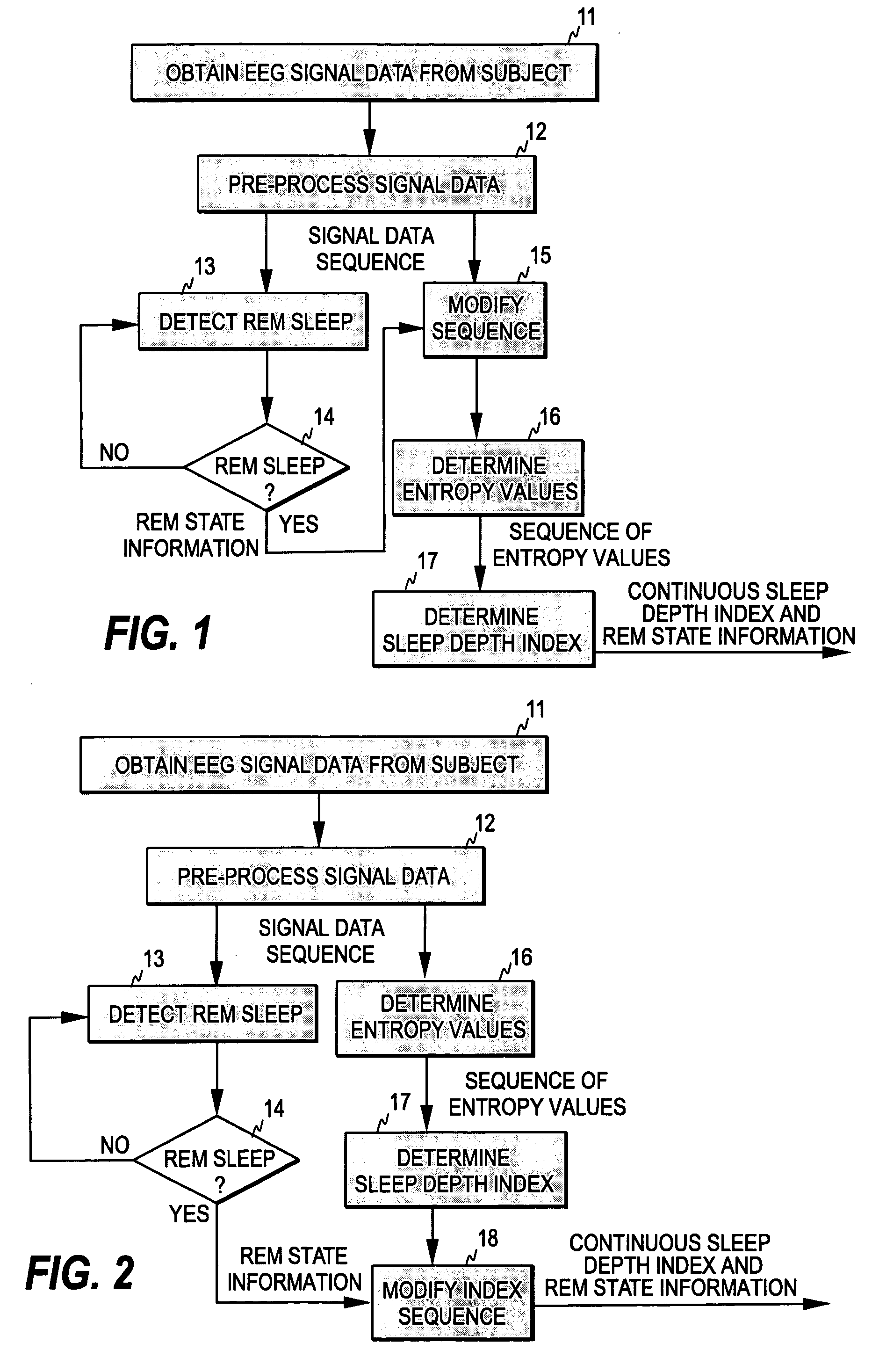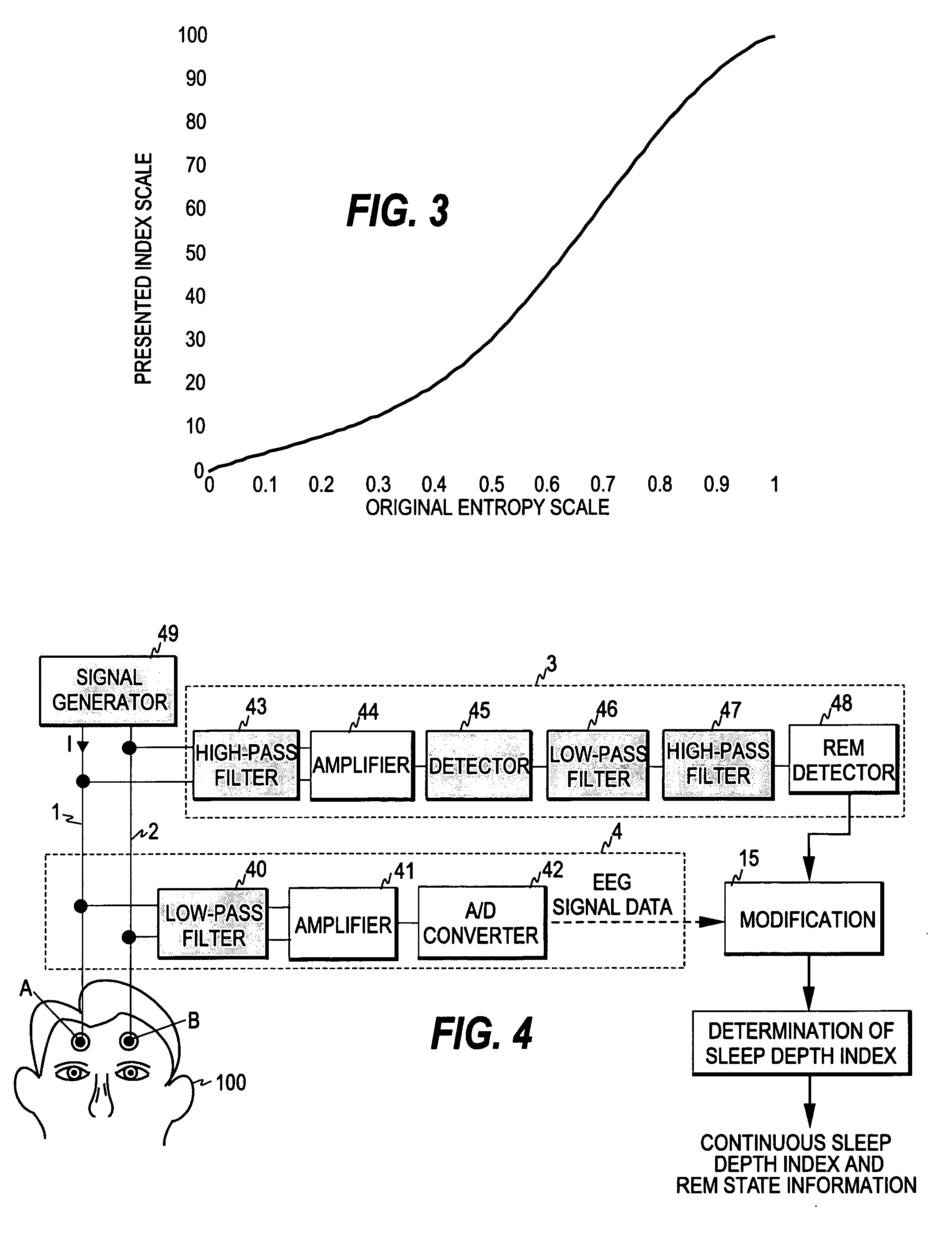Determination of sleep depth
a sleep depth and measurement technology, applied in the field of sleep analysis, can solve the problems of low number of laboratories, difficult to sleep naturally in these test environments, and separate sleep recording laboratories
- Summary
- Abstract
- Description
- Claims
- Application Information
AI Technical Summary
Benefits of technology
Problems solved by technology
Method used
Image
Examples
Embodiment Construction
[0027]FIG. 1 illustrates one embodiment of the method of the present invention. As discussed above, an EEG signal is measured from a certain measurement area of the patient, such as the forehead (step 11). The measured signal is first digitized and the sampled biosignal may be filtered to exclude high- and low-frequency artifacts (step 12). As is common in the art, the digitized signal samples are processed as sets of sequential signal samples representing finite time blocks or time windows, commonly termed “epochs”. The process continuously calculates the entropy values of the EEG signal data within the successive and possibly overlapping time windows (step 16). In this example, entropy refers to spectral entropy. However, instead of spectral entropy several other types of measures of irregularity may also be utilized, such as Shannon entropy or approximate entropy.
[0028]Furthermore, the process continuously monitors the incoming EEG signal data in order to detect the periods of RE...
PUM
 Login to View More
Login to View More Abstract
Description
Claims
Application Information
 Login to View More
Login to View More - R&D
- Intellectual Property
- Life Sciences
- Materials
- Tech Scout
- Unparalleled Data Quality
- Higher Quality Content
- 60% Fewer Hallucinations
Browse by: Latest US Patents, China's latest patents, Technical Efficacy Thesaurus, Application Domain, Technology Topic, Popular Technical Reports.
© 2025 PatSnap. All rights reserved.Legal|Privacy policy|Modern Slavery Act Transparency Statement|Sitemap|About US| Contact US: help@patsnap.com



